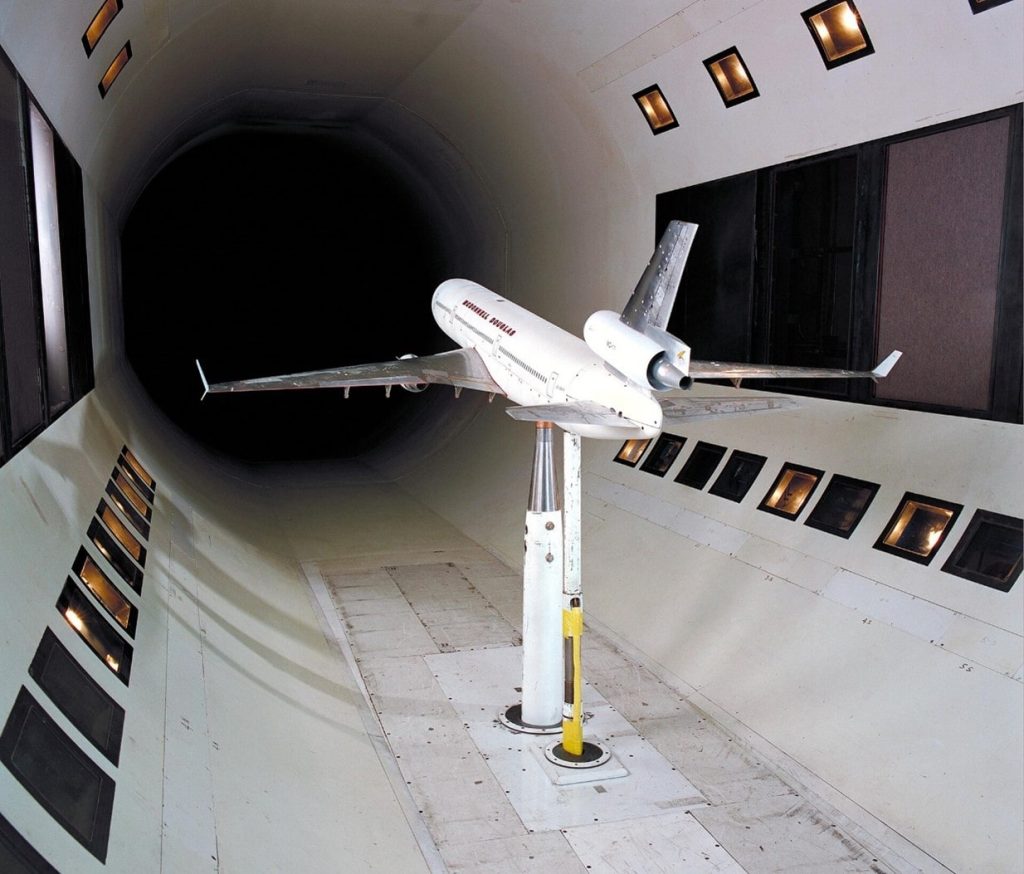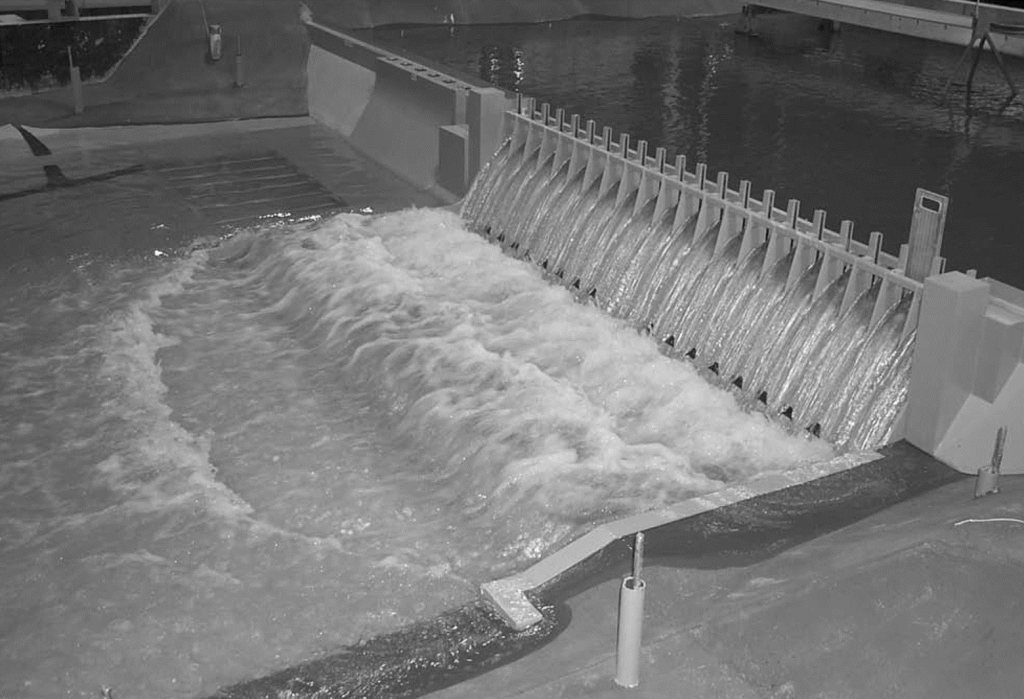Dimensionless numbers are used to investigate various phenomena in fluid mechanics. In this article, we will see where these numbers come from and get to know the most used ones. We examine the importance of these numbers in CFD simulations in ANSYS Fluent. Let’s take a look at the modeling and analogy using these numbers to see how they use them to design engineering structures.
Contents
Toggle
What is a Dimensionless Number?
Imagine that you are studying a fluid phenomenon, for example, a fluid flow regime. In the laboratory, you check the flow of water in a pipe and observe the fluid movement pattern (this is possible with different methods, such as particle image velocimetry). You increase the speed of the fluid, and in the end, based on the results, you can say in which speed range the water flow is laminar and in which speed range it is turbulent.
What if the fluid was not water, or what if the diameter of the pipe was different? Should you repeat the study with new conditions? To solve this problem, scientists have developed a method that involves performing a single test by changing only the velocity while keeping the pipe diameter and fluid type constant. By the results that test, under other conditions, with different fluids, pipe diameters, and fluid speeds, the flow regime can be determined. This method makes use of the dimensionless Reynolds number.
Determining the flow regime using the Reynolds number is just one example of the application of dimensionless numbers in fluid mechanics. Many other phenomena in this field are studied with the help of various dimensionless quantities.
Click to access the CFD fluid mechanics
The Most Widely Used Dimensionless Numbers
There are many dimensionless numbers, here we mention the most used and famous ones:
Reynolds number
This dimensionless number describes the ratio of inertial force to viscous force, With the increase of this number, the importance of the inertial force compared to the viscosity in the flow increases and slowly the flow regime changes from laminar to turbulent. It is worth noting that it does not express the exact ratio of these two forces and it indicates the relative importance of each in the flow. Reynolds number is the most widely used number in fluid mechanics. If Re < 2300, the flow is laminar, if 2300 < Re < 4000 it is transitional and if Re > 4000 it is turbulent. Wherever the flow regime is effective, the Re number is also effective. This number is used in heat transfer calculations, pressure drop and many other places.
![]()
ρ is fluid density [kg/m³], U is fluid velocity [m/s], D is characteristic length [m], and μ is dynamic viscosity of the fluid [Pa.s]. See “What is Reynolds Number (Re)?” or “The Differences Between Laminar and Turbulent Flow” for more information on Re number
Nusselt number
The Nusselt number is defined as the ratio of convective heat transfer to conductive heat transfer. It is important in the study of fluid flow and heat transfer across various engineering applications.
![]()
h is the convective heat transfer coefficient [W/m²·K], L is the characteristic length [m], and k is the thermal conductivity of the fluid [W/m·k]
Click to access the CFD heat transfer
Mach number
This dimensionless number represents the ratio of fluid speed to the speed at which sound moves in that fluid. If this number is smaller, equal or greater than one, it is subsonic, sonic and supersonic fluid respectively. Each of these states has its own phenomena and equations. Mach number has other uses, for example, if its value is more than 0.3, it means that the flow is compressible, which means extreme changes in density. Conversely, flows with Mach numbers less than 0.3 are generally considered incompressible, meaning density changes are negligible.
![]()
U is the velocity of the object relative to the fluid or velocity of the fluid [m/s], and a is the speed of sound in the fluid [m/s].
Froude number
In fluid flows, this value shows the inertia force to gravity force ratio. In classification of flow regimes, it is vital: the flow is subcritical, with gravitational forces controlling when Fr < 1; the flow is critical when Fr = 1; and the flow is supercritical, with inertial forces dominating, when Fr > 1. Naval architecture, ship design, open channel hydraulics all find great use for this dimensionless number. Particularly in free-surface flows and the interaction between ships and aquatic bodies, it enables engineers and scientists in these disciplines analyse and forecast fluid behaviour.
![]()
U is the characteristic velocity of the flow [m/s], g is the acceleration due to gravity [m/s2], and L represents the characteristic length [m].
Cavitation number (Euler number)
This number is the ratio of pressure difference (local minus vapor pressure) to dynamic pressure. Cavitation means that due to the decrease in fluid pressure, its phase turns into gas. This dimensionless number expresses the probability of cavitation and the lower its value, the higher the probability of cavitation. This dimensionless parameter is crucial in hydraulic machinery design, helping engineers prevent cavitation-related issues like erosion and efficiency loss.
![]()
p is the local pressure [Pa], pv is the vapor pressure of the fluid [Pa], ρ is the fluid density, and U is the characteristic velocity of the flow.
Prandtl number
it is described as the ratio of dissipation (momentum diffusivity) to conduction (thermal diffusivity). It is crucial in analyzing convective heat transfer and determining heat transfer coefficients in various flow situations. You will see this number in some displacement heat transfer equations. The value of Pr varies significantly across different fluids: liquid metals have Pr << 1, gases typically have Pr ≈ 1, and oils have Pr >> 1.
![]()
ν is kinematic viscosity [m2/s], α is the thermal diffusivity [m2/s], μ is the dynamic viscosity [Pa·s], ρ is the density [kg/m³], k represents the thermal conductivity [W/(m·K)], and Cp implies the specific heat capacity at constant pressure [J/(kg·K)].
Grashof number
This number represents the ratio of buoyancy forces compared to viscous forces in a fluid. A higher Gr number indicates the dominance of buoyancy force, which leads to free convection flow. If the Grashof number is much higher than one, the probability of free convection heat transfer is high because of the buoyancy force caused by the density difference in the fluid. Heat transfer equations in such a case are a function of Pr and Gr numbers. This number is important in heat transfer problems involving fluids because it determines whether free convection heat transfer occurs or not.
![]()
ρ is the density [kg/m³], g is the acceleration due to gravity [m/s²], β represents the coefficient of volumetric thermal expansion [1/K], Ts implies the surface temperature [K], T∞ is the fluid temperature far from the surface [K], L is the characteristic length [m], and μ is the dynamic viscosity [Pa.s].
Rayleigh number
This number is a ratio of buoyancy to viscous forces and is used instead of the Reynolds number to identify the flow regime in flows caused by natural convection. Typically, for Rayleigh numbers below a critical value (often cited as Ra < 109 for many situations), the flow remains laminar. In this regime, the fluid flow is smooth and orderly.
![]()
The units of the parameters are the same as those mentioned in the descriptions of the Grashof and Prandtl numbers.
Where do Dimensionless Numbers come from?
In some cases, dimensionless numbers can be directly extracted from different equations. However, the main way to find these numbers is to use the Buckingham Pi Theorem. All dimensionless numbers are obtained by this method.
We will explain this method with an example. In the study of the flow regime inside a pipe, According to experimental results, 4 parameters are effective: density (ρ), pipe diameter (D), fluid viscosity (μ), and flow speed (U). All these variables can be described using the three fundamental dimensions of distance (L), time (T), and mass (M). The difference between the number of parameters and the number of available dimensions determines the number of dimensionless numbers that can be used to study the desired phenomenon (4-3=1). Next, we multiply all the parameters together, each raised to an unknown power. The product of their multiplication must result in a dimensionless number, so:
![]()
![]()
![]()
![]()
So, the dimensionless number of our desired phenomenon is:
![]()
The standard form of this number, which is called the Reynolds number, is:
![]()
In most cases, The Buckingham Pi Theorem is defined like this example. But there are exceptions that do not like other models of this theory. For more information, refer to a fluid mechanics reference book.
Click to access the HVAC CFD
Modeling and Similarity
A key application of dimensionless numbers is in modeling and similarity. You may have observed tests conducted on scaled-down models aircraft, or other objects in wind tunnels. By maintaining the same relevant dimensionless numbers between the laboratory model (e.g., a small aircraft) and the full-scale model (the actual aircraft), engineers can extrapolate data. For instance, the drag force on a full-size aircraft can be calculated from measurements of the drag force on the small-scale model, provided proper scaling laws are applied.

NASA wind tunnel with the scale model of the MD-11 wide-body airliner. Adopted from “Wikipedia”.

Hydraulic model of the Bluestone Lake Dam on the New River near Hinton, West Virginia. The model scale is 1:65 both vertically and horizontally, and the Reynolds number, though far below the prototype value, is set high enough for the flow to be turbulent. Adopted from Fluid Mechanics by Frank M. White.
Dimensionless Numbers in ANSYS Fluent
In many cases, calculating dimensionless numbers and setting ANSYS Fluent based on them is vital for simulation. For example, before the simulation, the flow regime is determined using the Re number. If the flow is turbulent, it is essential to select the appropriate turbulence model for the simulation.
In many cases, the results of Fluent need to be in the form of dimensionless numbers, which this software allows to output in the form of different numbers.

In ANSYS Fluent, in the Reference Values section, the values of various parameters are defined as shown in the figure. In many cases, these parameter values are used to calculate dimensionless numbers.

In the Reports section, there are many options for calculating various parameters, including pressure, temperature, and heat transfer fluxes. You can extract the maximum, minimum, and average values of these parameters from ANSYS Fluent at a point, on a surface, or within a volume. Then you can use the extracted data to calculate dimensionless numbers.
Conclusion
Studying and using dimensionless numbers is the basis of fluid mechanics. With each of these numbers, at least one fluid phenomenon can be studied. With the help of these numbers, the influencing factors and forces in the system are determined. There are many dimensionless numbers, but it can be said that the Reynolds number is the most commonly used in fluid mechanics, and the Nusselt number is the most commonly used in heat transfer.
read more:

